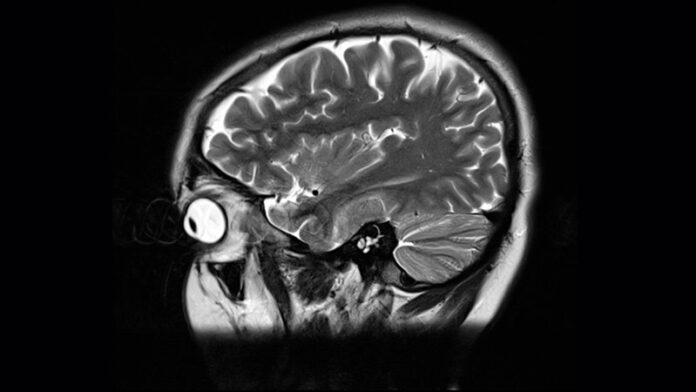[ad_1]
The incidence of idiopathic intracranial hypertension (IIH) — characterized by increased cerebral spinal fluid (CSF) pressure — is rising considerably, corresponding to population increases in body mass index (BMI), a new study has shown.
“The condition is associated with a high rate of healthcare utilization, so the increasing incidence has important implications for healthcare professionals and policymakers in addressing the associated comorbidities,” senior author William Owen Pickrell, PhD, Swansea University, UK, told Medscape Medical News.
The study was published online January 20 in Neurology.
IIH is a condition of unknown etiology that is strongly associated with obesity, the researchers note. Predominantly affecting women of childbearing age, it causes chronic disabling headaches, visual disturbance, and in a minority of patients, permanent visual loss. The definitive management is weight loss, but a minority of patients require surgery to preserve vision.
People with IIH potentially have high rates of healthcare utilization, multiple specialist consultations, diagnostic tests, CSF diversion procedures, and complications related to CSF diversion surgery.
Given that there is a paucity of data regarding the epidemiology, healthcare utilization, and outcomes of people with IIH, researchers conducted the current retrospective cohort study, which aimed to determine the temporal trends of IIH incidence and prevalence in Wales and healthcare utilization associated with IIH. They also investigated the effects of socioeconomic deprivation and obesity on IIH epidemiology.
For the study, they used and validated primary and secondary care IIH diagnostic codes within the Secure Anonymised Information Linkage databank, which is part of the national e-health records research infrastructure for Wales, to ascertain IIH cases and controls between 2003 and 2017. In total, 35 million patient-years of data were analyzed.
Information was recorded on BMI, deprivation quintile, CSF diversion surgery, and unscheduled hospital admissions in case and control cohorts.
“This is the first time the diagnostic codes for this condition have been validated. This is important as it is critical if we are studying a condition to know that the individuals we are studying actually have that condition,” Pickrell commented. “We were able to establish that the diagnostic codes were 92% sensitive and 87% specific — that’s pretty good,” he added.
Results showed a significant increase in IIH incidence and prevalence in Wales. The prevalence of IIH in Wales increased sixfold from 12/100,000 in 2003 to 76/100,000 in 2017, and the incidence of IIH increased threefold from 2.3/100,000/year in 2003 to 7.8/100,000/year in 2017. This corresponded with increases in obesity rates: 29% of the population was obese in 2003 compared to 40% in 2017.
“The considerable increase in IIH incidence is multifactorial but likely predominately due to rising obesity rates,” the authors note. “The worldwide prevalence of obesity nearly tripled between 1975 and 2016 and therefore these results also have global relevance,” they add.
The increase in IIH incidence may also be attributable to increased IIH diagnosis rates due to raised awareness of the condition and greater use of digital fundoscopy at routine optometry appointments, they suggest.
“We found a strong association between increasing BMI, sex (being female), and IIH. Around 85% of our IIH cohort were female, similar to other studies, and we also found a significant association with increased deprivation and IIH, particularly in women,” the authors report.
IIH is associated with increasing deprivation in women even after adjusting for obesity suggesting additional etiological factors associated with deprivation apart from BMI; this effect was not seen in men, pointing to sex-specific drivers for IIH, they add.
The results also show that individuals with IIH have increased rates of unscheduled healthcare utilization compared with a matched-control cohort. The rate ratio for unscheduled hospital admissions in the IIH cohort compared with controls was 5.28.
“A considerable proportion of this excess in unscheduled hospital admissions occurs at the time of diagnosis and can be explained by the need for urgent investigation of papilloedema with brain imaging and spinal fluid analysis. However, there is also a considerable excess in unscheduled hospital admissions up to 2 years after diagnosis,” the authors report.
They suggest that these admissions are likely to be for severe headache, and they say there is some scope to reduce emergency admissions through better management of headache, patient education, and rapid access to outpatient specialist advice.
They also point out that the rate of unscheduled admissions is higher in the IIH cohort in the 3 years leading up to diagnosis, suggesting an opportunity for earlier diagnosis and earlier intervention.
In their study population, 8% of patients with IIH received CSF diversion procedures a mean of 1.3 years after diagnosis, and these patients showed significantly increased unscheduled healthcare admission rates compared with IIH patients who had not undergone such procedures.
“There are frequent complications with the shunts after surgery, which causes a high revision rate,” Pickrell commented. In this study, 40% of patients undergoing CSF diversion needed at least one CSF shunt revision procedure.
The study was supported by the Brain Repair and Intracranial Neurotherapeutics (BRAIN) Unit, Wales Gene Park, Health Data Research UK, Engineering and Physical Sciences Research Council, Economic and Social Research Council, Department of Health and Social Care (England), Chief Scientist Office of the Scottish Government Health and Social Care Directorates, Health and Social Care Research and Development Division (Welsh Government), Public Health Agency (Northern Ireland), British Heart Foundation, and Wellcome Trust. The authors have reported no relevant financial relationships.
Neurology. Published online January 20, 2021. Full text
For more Medscape Neurology news, join us on Facebook and Twitter.
[ad_2]
Source link












